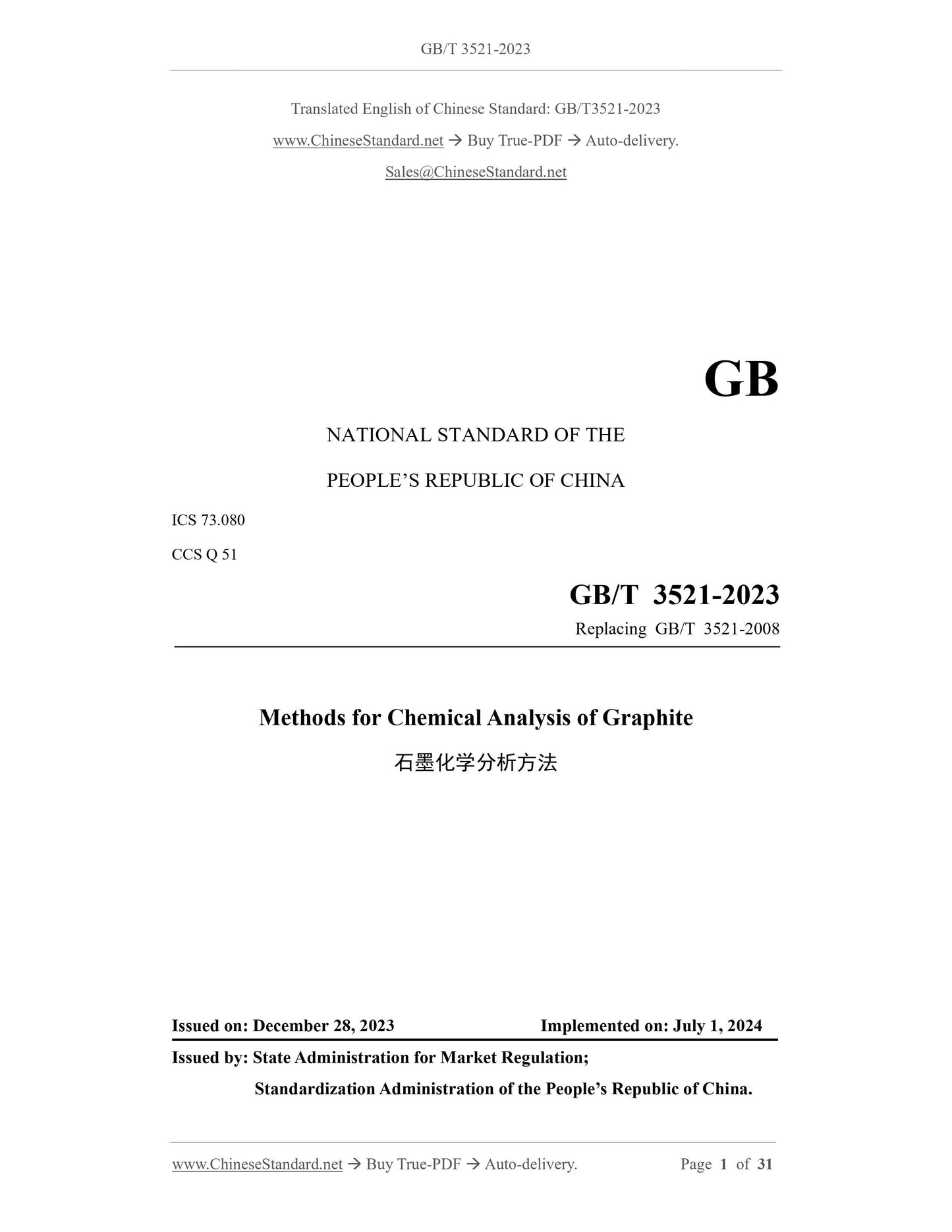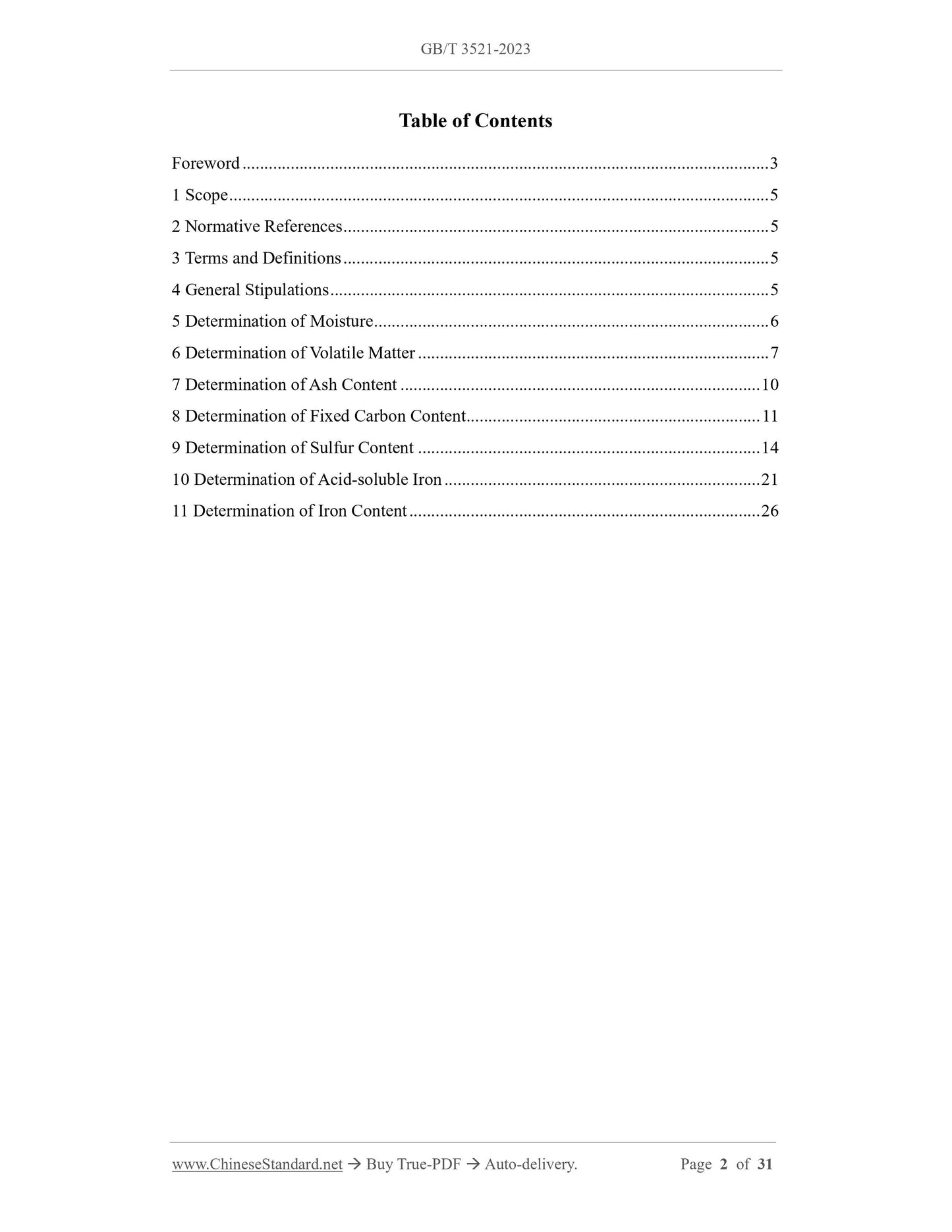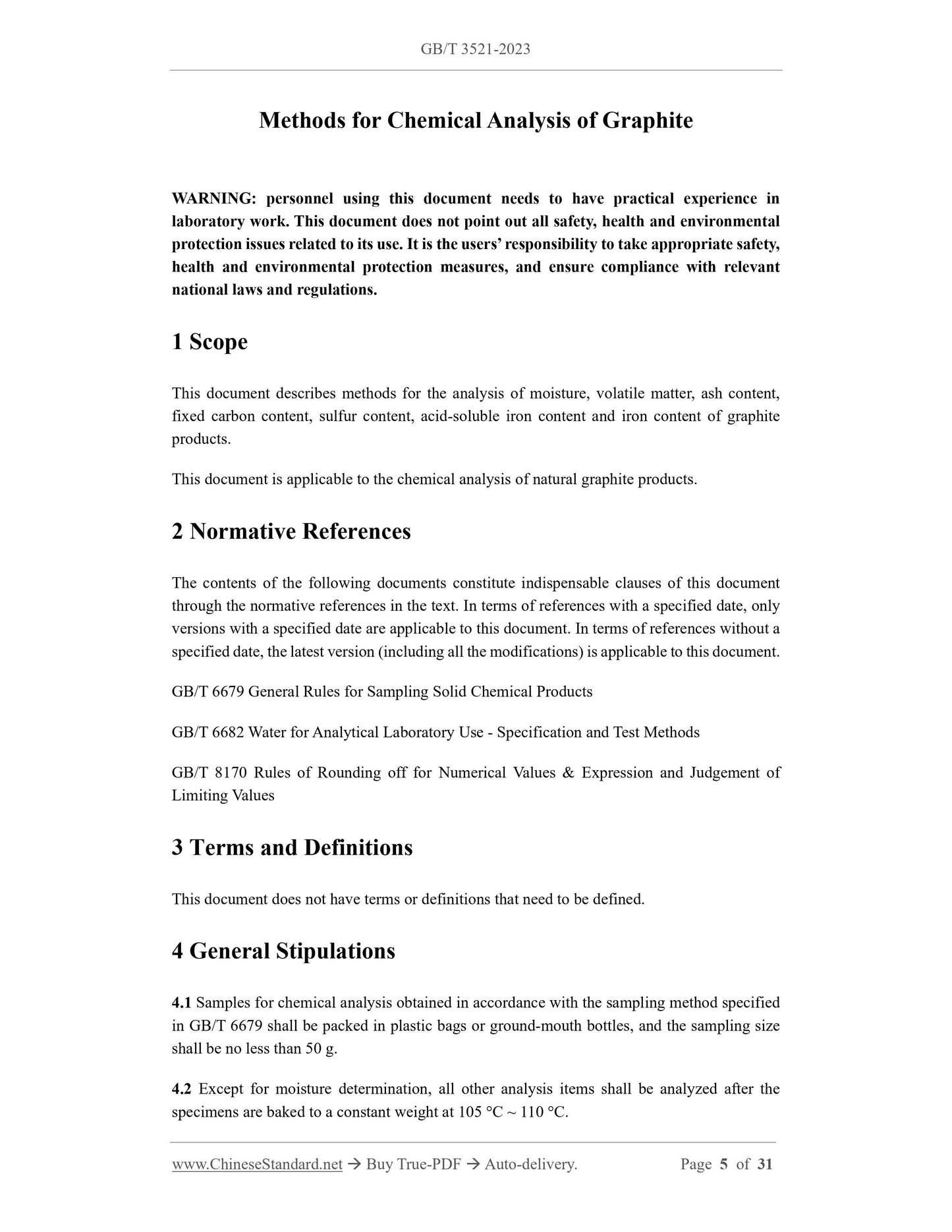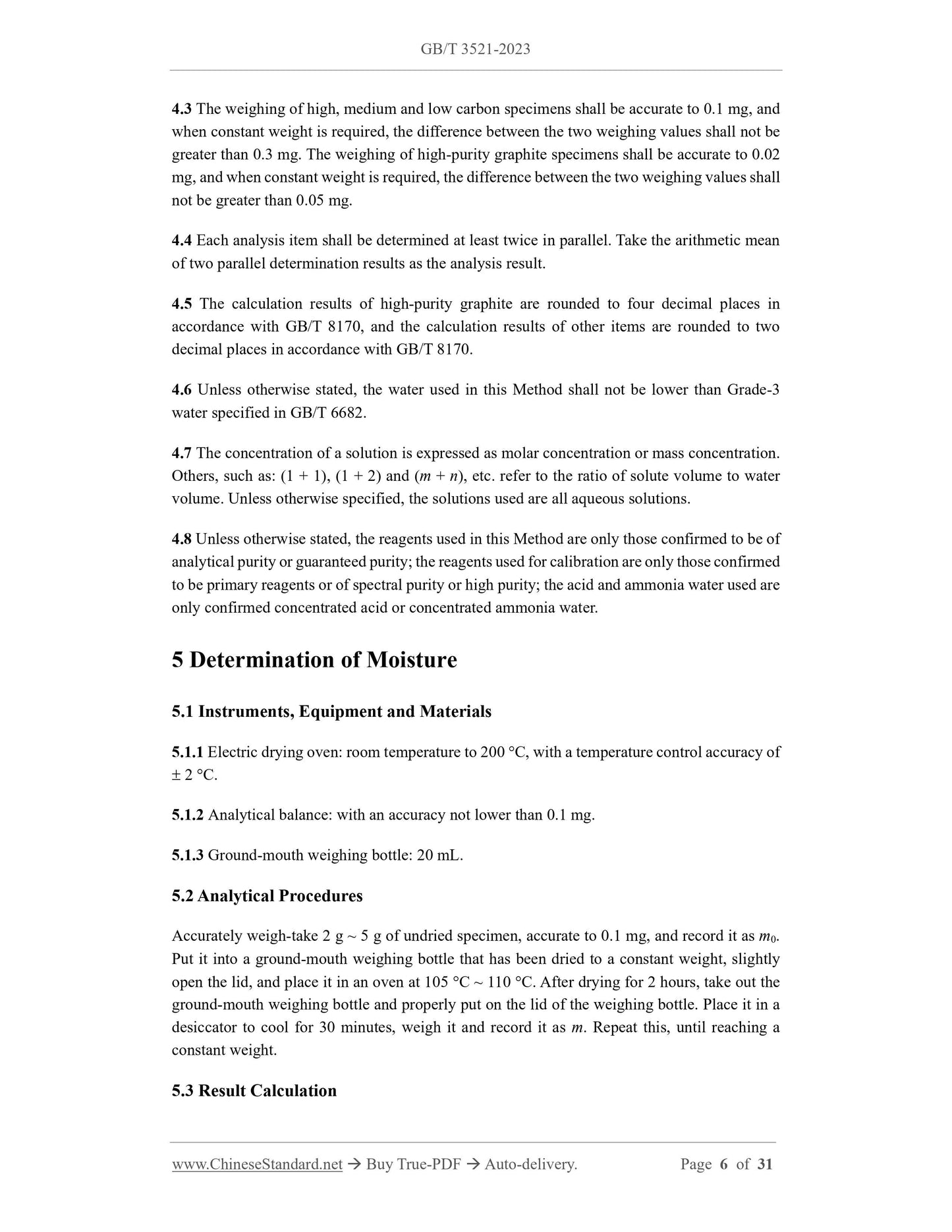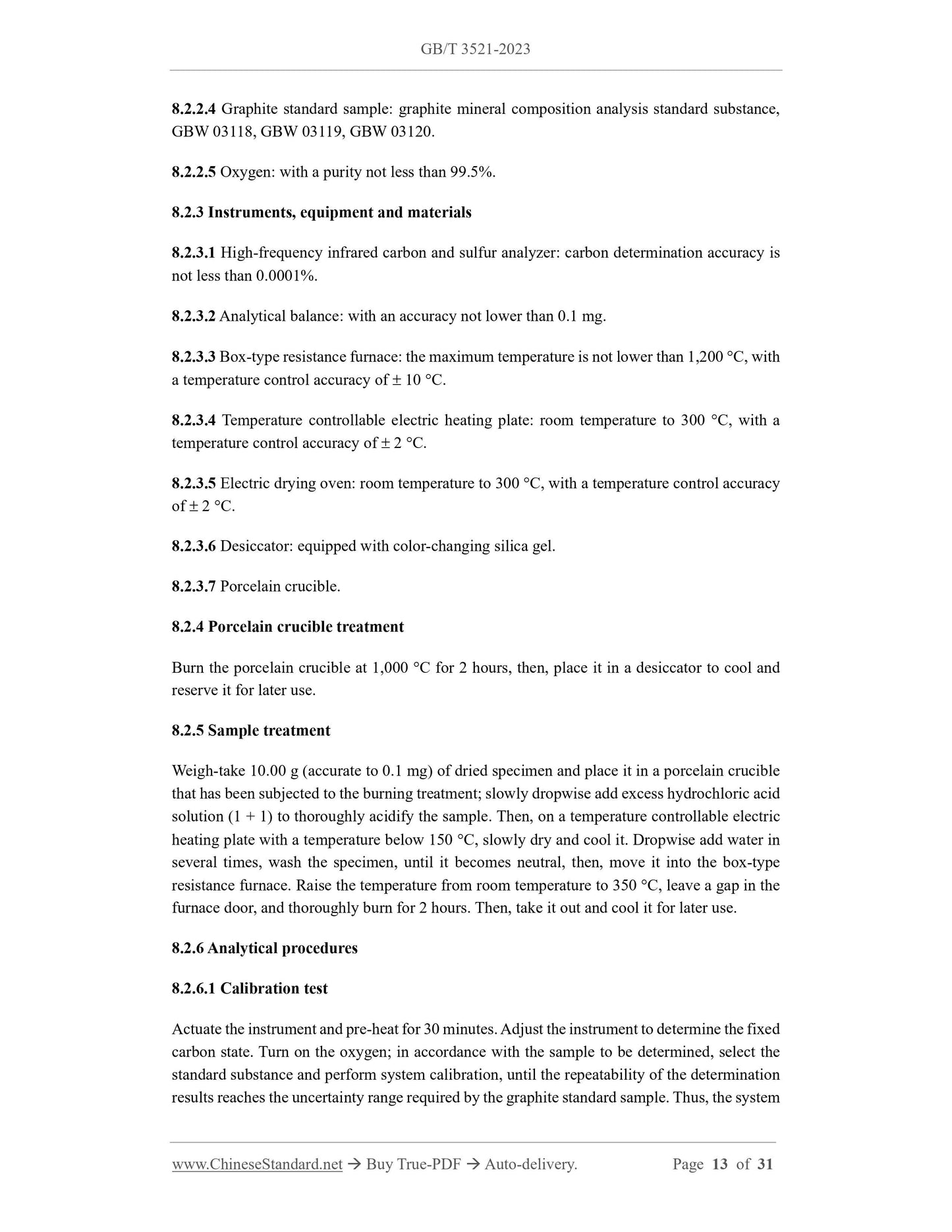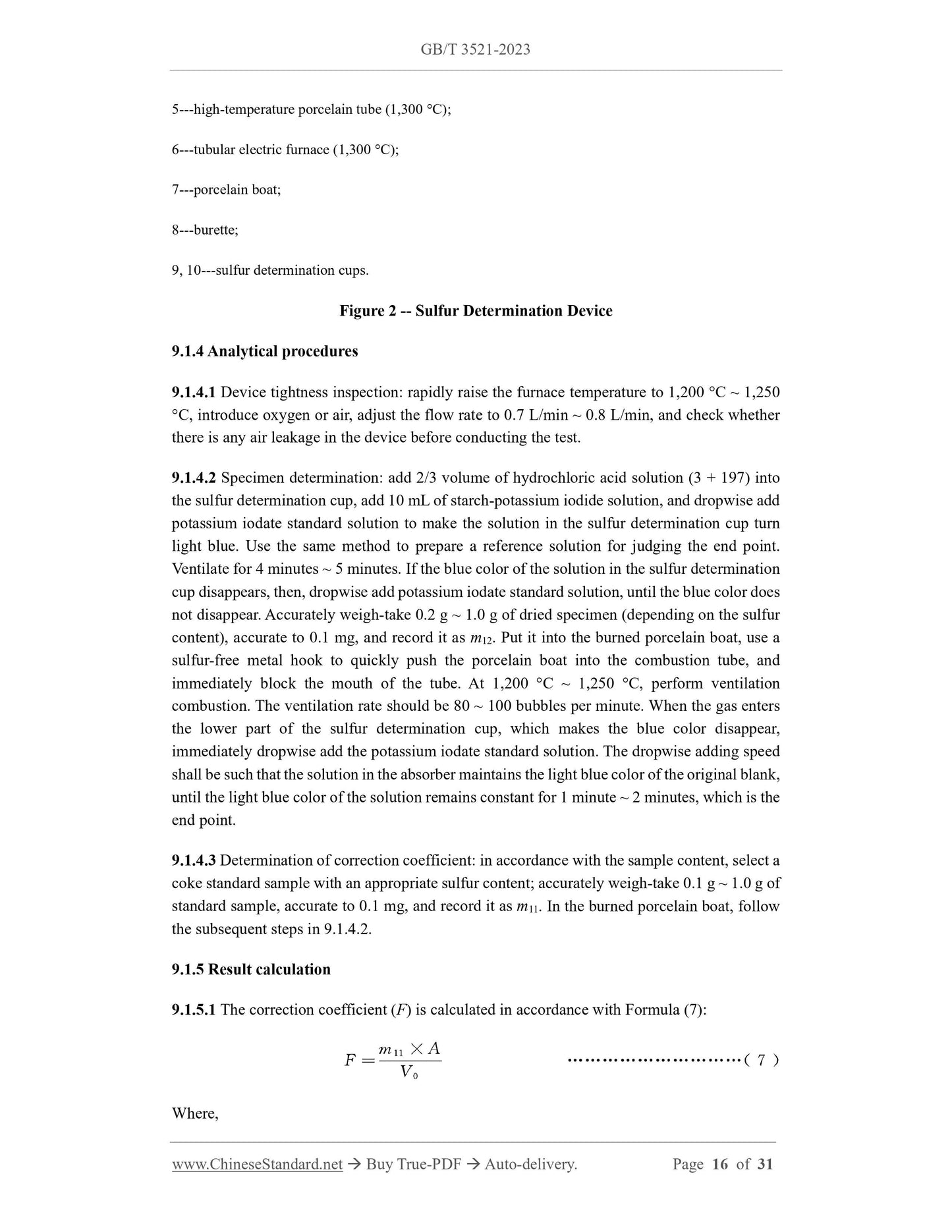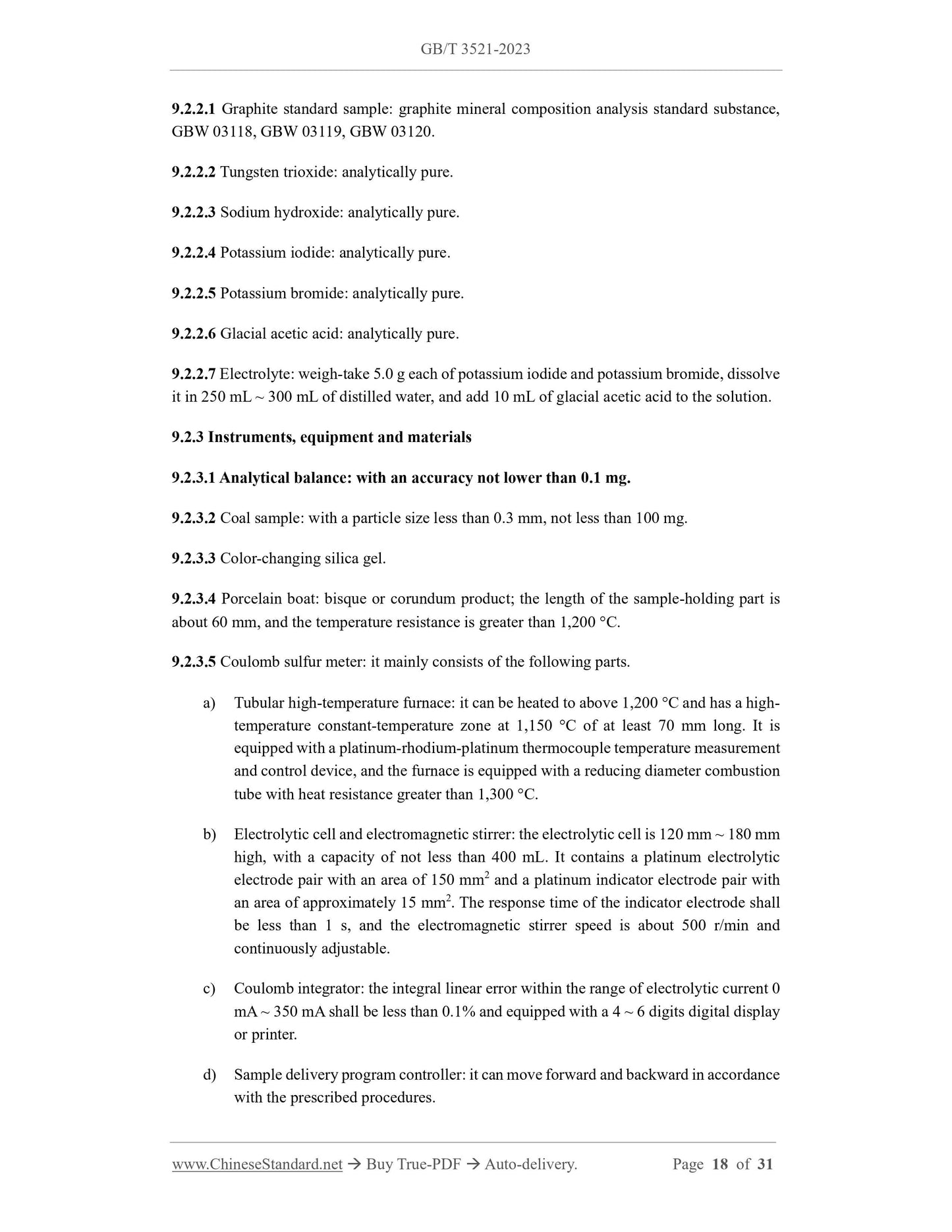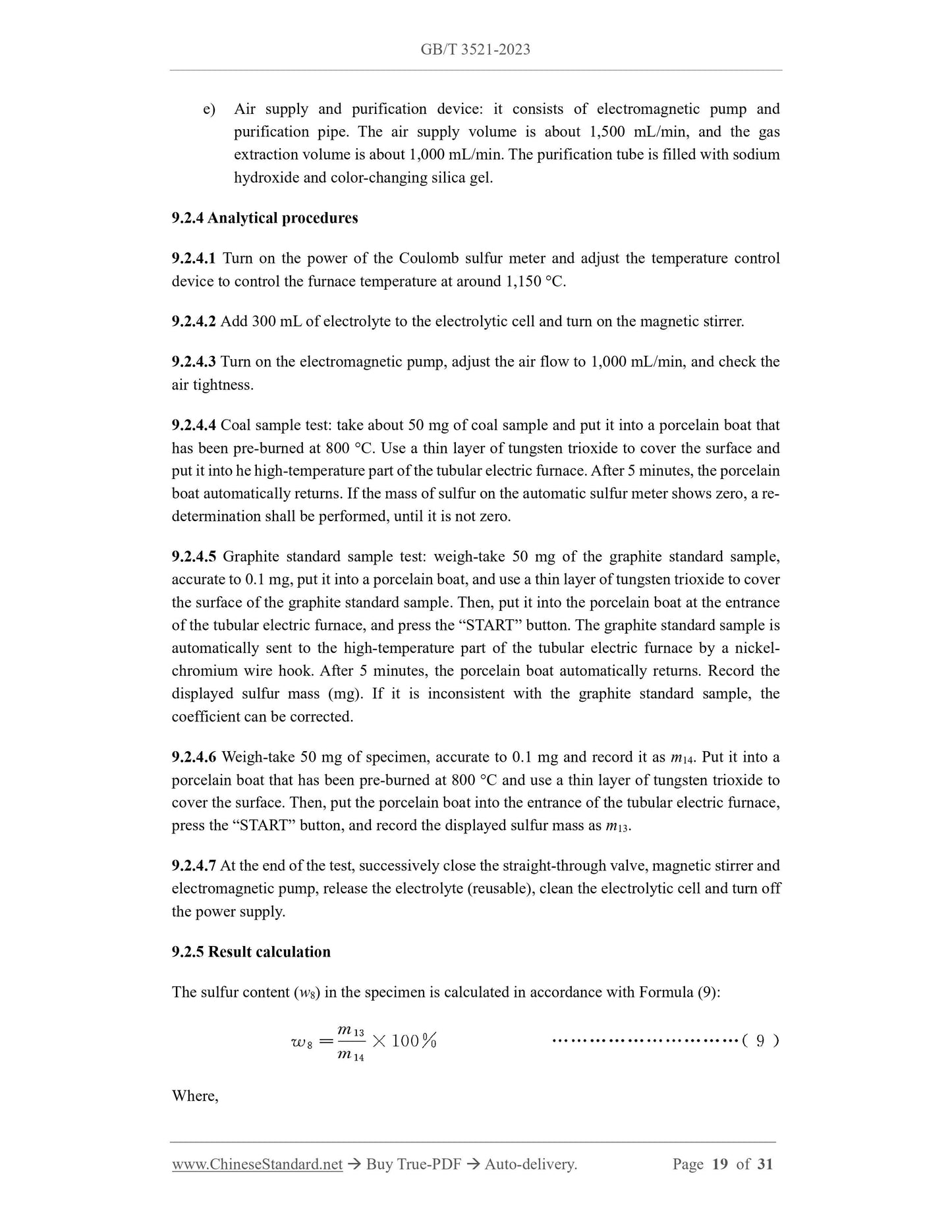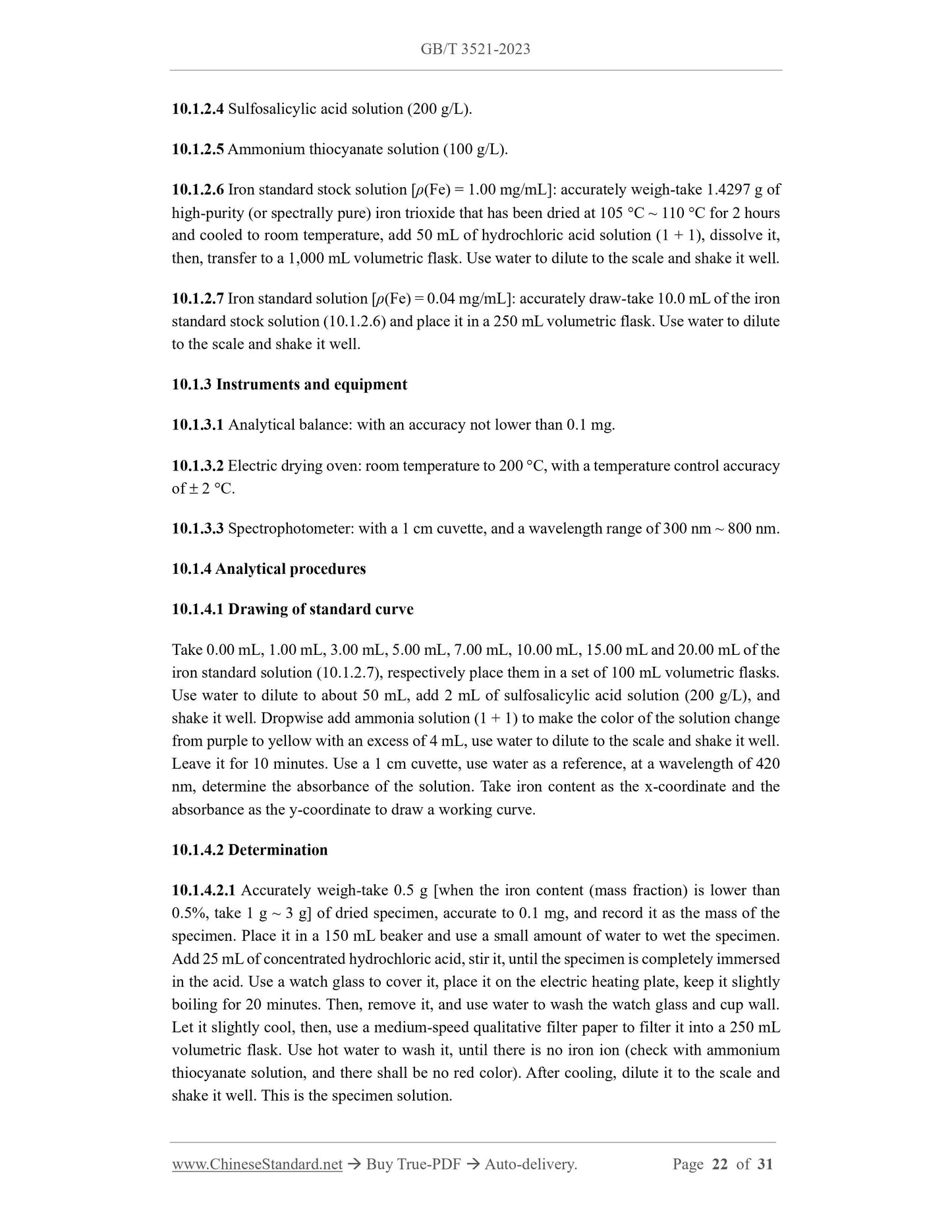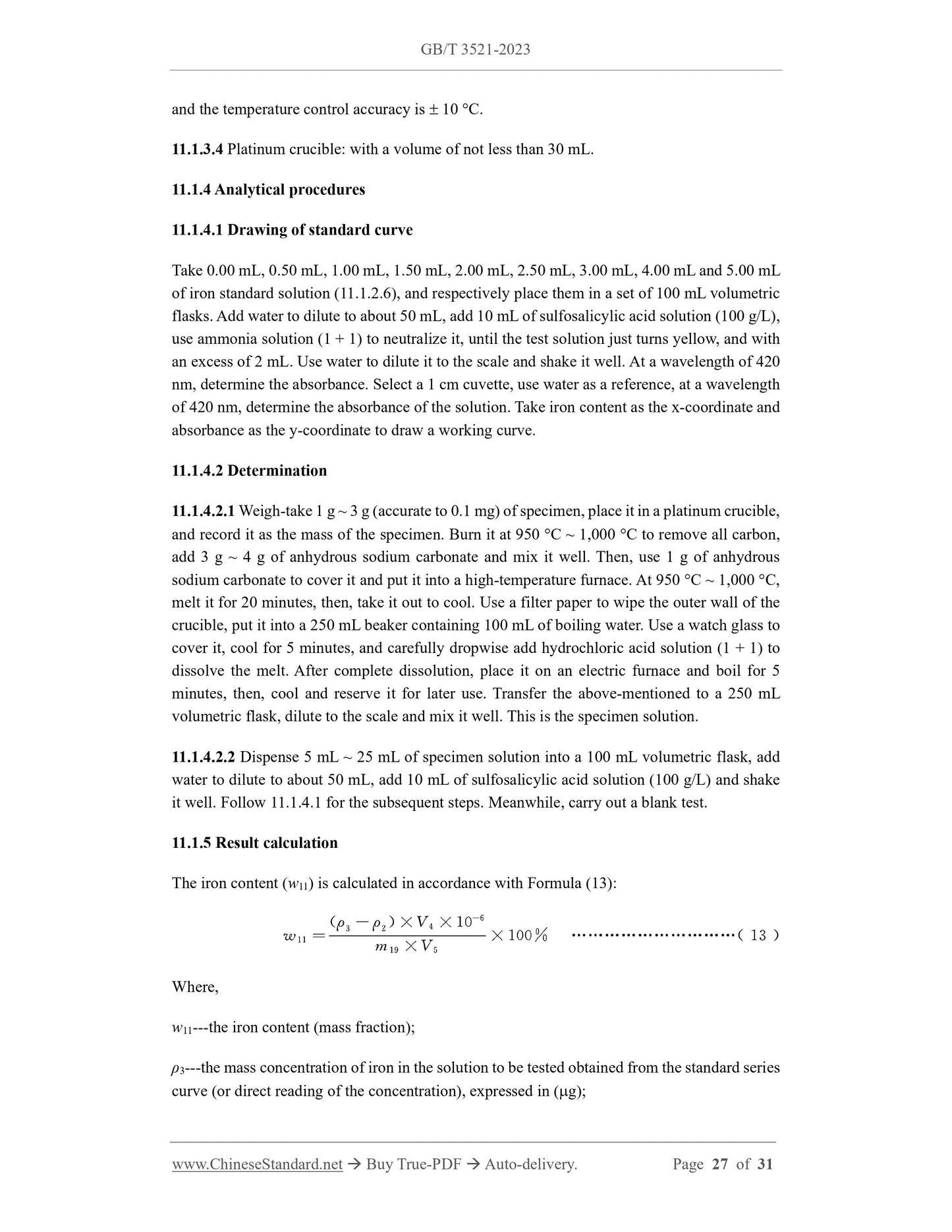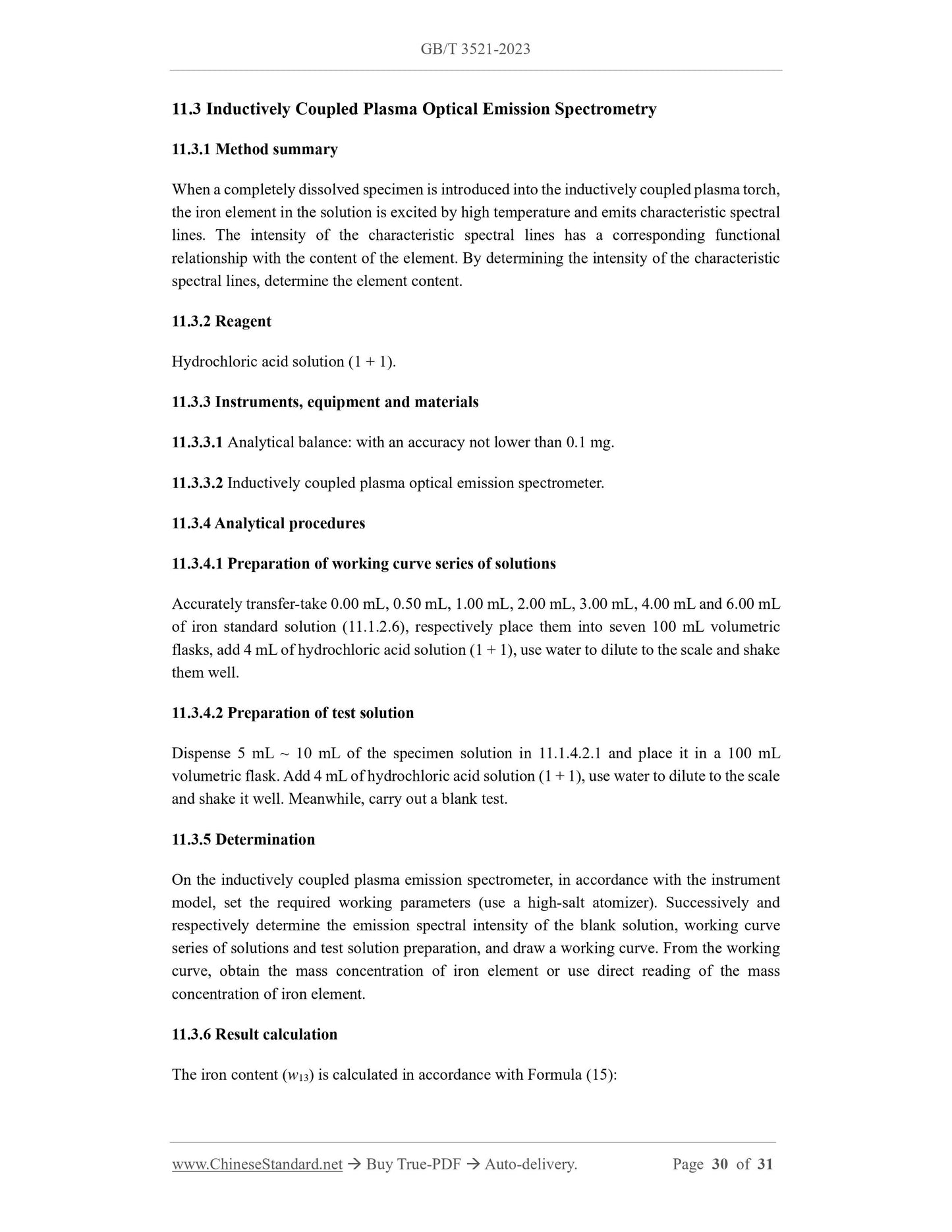1
/
of
11
www.ChineseStandard.us -- Field Test Asia Pte. Ltd.
GB/T 3521-2023 English PDF (GB/T3521-2023)
GB/T 3521-2023 English PDF (GB/T3521-2023)
Regular price
$380.00
Regular price
Sale price
$380.00
Unit price
/
per
Shipping calculated at checkout.
Couldn't load pickup availability
GB/T 3521-2023: Methods for chemical analysis of graphite
Delivery: 9 seconds. Download (and Email) true-PDF + Invoice.Get Quotation: Click GB/T 3521-2023 (Self-service in 1-minute)
Newer / historical versions: GB/T 3521-2023
Preview True-PDF
Scope
This document describes methods for the analysis of moisture, volatile matter, ash content,fixed carbon content, sulfur content, acid-soluble iron content and iron content of graphite
products.
This document is applicable to the chemical analysis of natural graphite products.
Basic Data
| Standard ID | GB/T 3521-2023 (GB/T3521-2023) |
| Description (Translated English) | Methods for chemical analysis of graphite |
| Sector / Industry | National Standard (Recommended) |
| Classification of Chinese Standard | Q51 |
| Classification of International Standard | 73.080 |
| Word Count Estimation | 22,242 |
| Date of Issue | 2023-12-28 |
| Date of Implementation | 2024-07-01 |
| Older Standard (superseded by this standard) | GB/T 3521-2008 |
| Issuing agency(ies) | State Administration for Market Regulation, China National Standardization Administration |
Share
